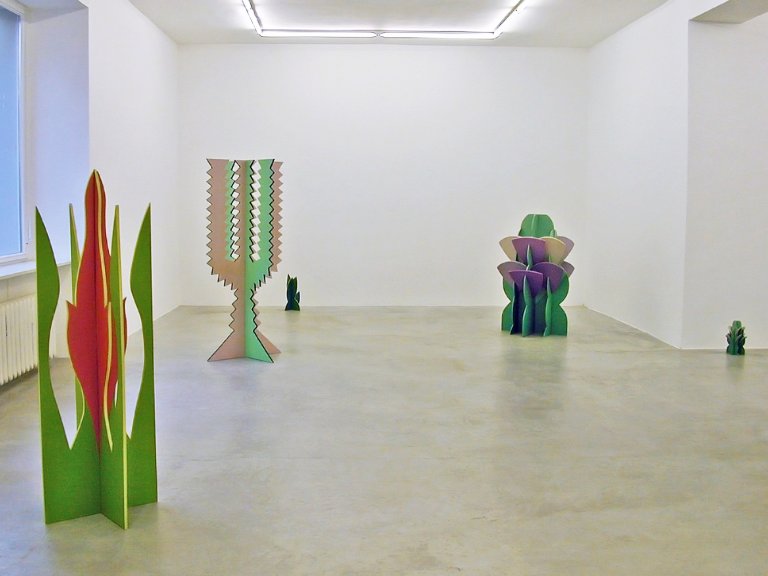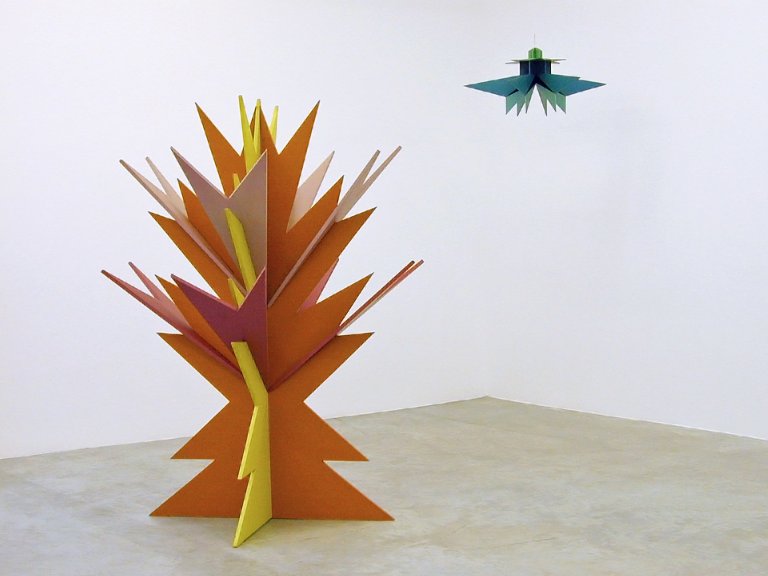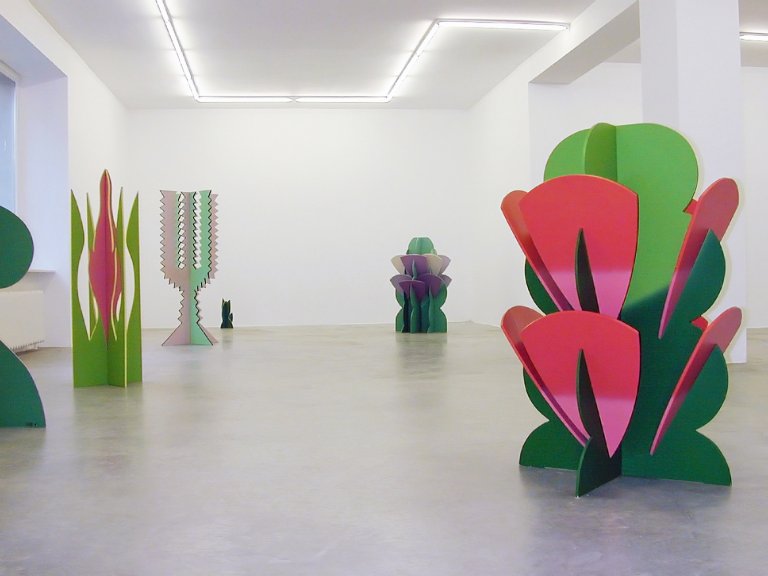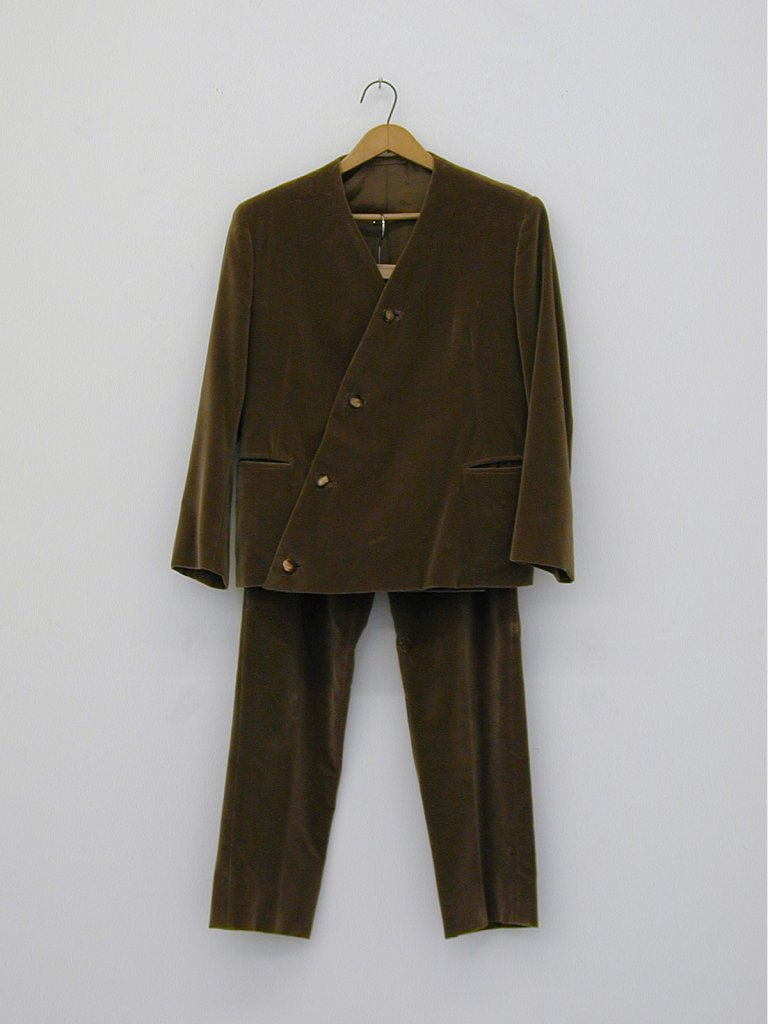Giacomo Balla »Il giardino futurista«
Berlin, December 14, 2002 - January 25, 2003
During the holiday season Galerie Nordenhake is showing the work, Il giardino futurista ("The Futurist Garden"), 1916-1930, by the Italian artist Giacomo Balla. This work has a very special status as one of the first installations in the history of modern art. Il giardino futurista represents the all-encompassing side of Futurism in general, as well as Balla's art in particular. It expresses the installatory qualities found in his sculpture and theatre designs, but also makes playful references to industrially produced consumer objects. It displays a true futurist gesture by highlighting the values of an artificial paradise at the expenses of an idealized and romanticized bourgeois conception of "Nature" as the fons et origo of authenticity.
Born in 1871, Balla was a senior member in the first wave of Futurist painters and also well established as a teacher (Umberto Boccioni and Gino Severini were his students). His early, pre-Futurist period was influenced by the pointillism of Georges Seurat and it was not until 1910 that he joined the Futurist movement. That year he co-signed the first futurist "Manifesto," along with artists including Boccioni and Carlo Carrà, where the primary objective of depicting movement was outlined. Movement was symbolic of the commitment to the dynamic forward thrust of the twentieth century. Futurism celebrated the machine-the racing car, motorcycle and airplane were heralded as the triumph of the age-and early futurist paintings were concerned with capturing figures and objects in motion. During The Great War Balla was advocating a totally futurist lifestyle-he even named his two Daughters Propeller and Light-and his artistic projects expanded into sculpture (such as Boccioni's Fist, 1915) and the applied arts, especially costume and theatre design.
In the Twenties, during the so-called second wave of Futurism, Balla was still an important force within the ranks of the new, young group of artists (where literature and political activism come to play a larger role). In spite of having given up on Futurism towards the end of the decade, he co-signed a second Futurist Manifesto (The Manifesto of Aeropainting) in 1929, together with Marinetti, Benedetta, Dottori, Depero, Fillia, Prampolini, and others; and exhibited with them in 1931. Giacomo Balla died in 1958.



